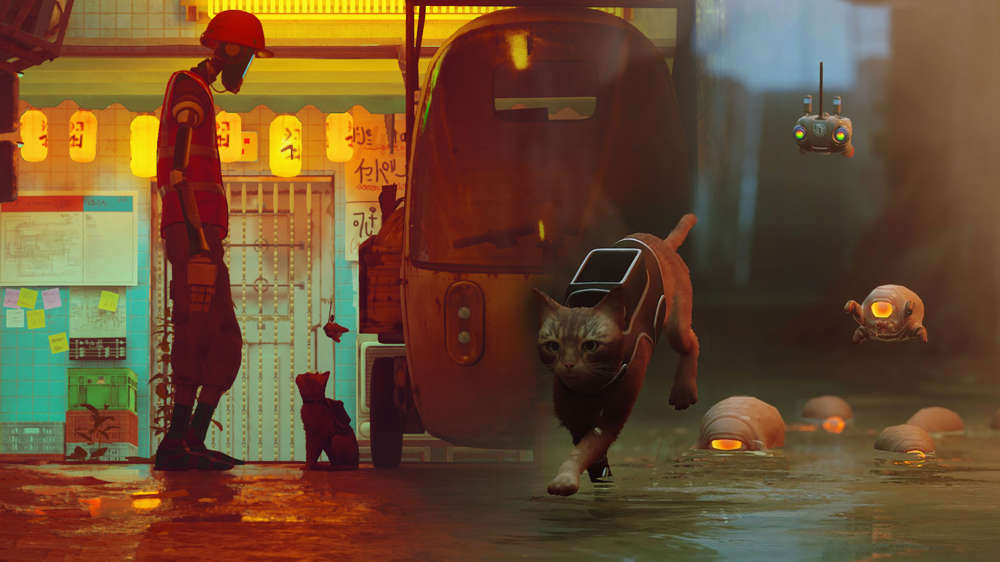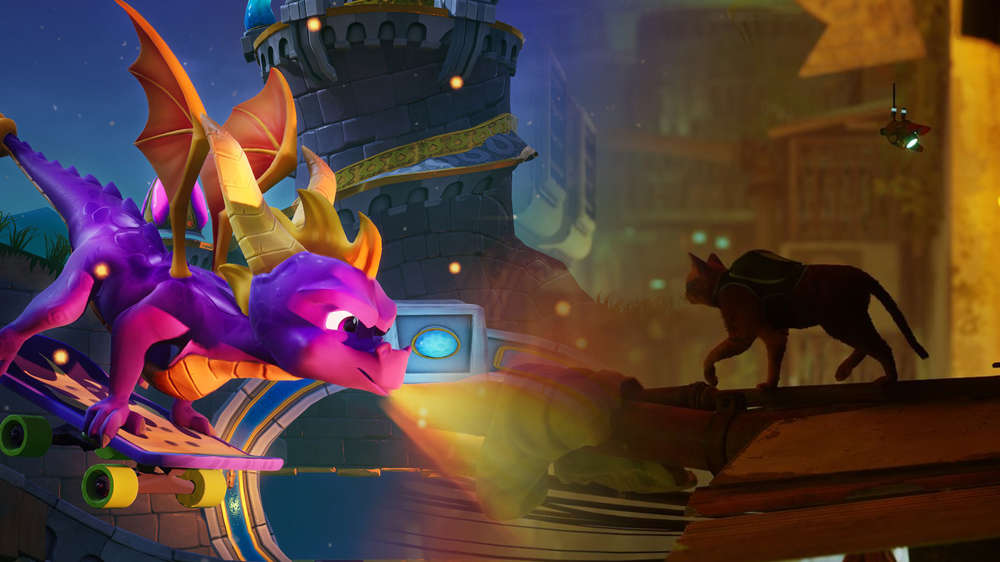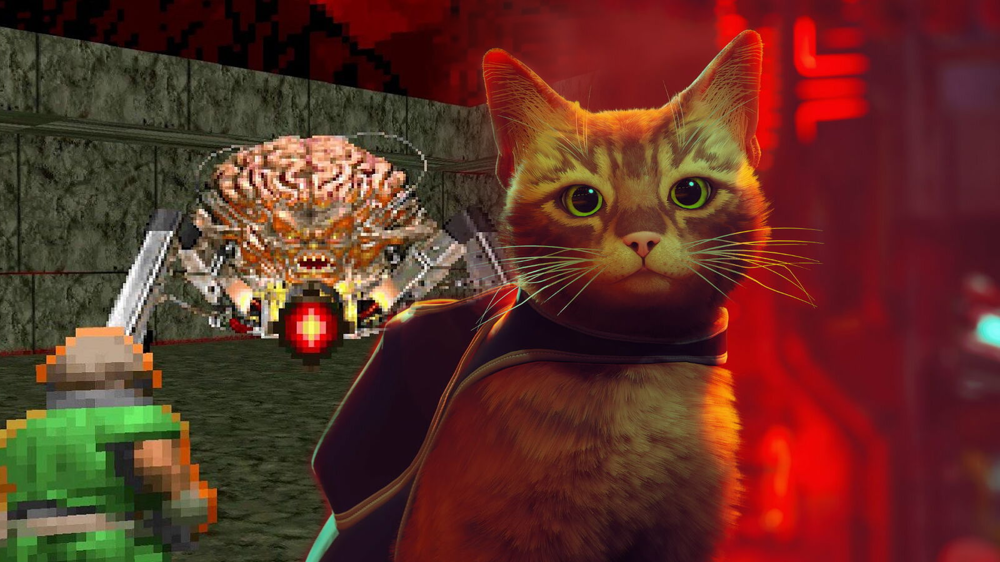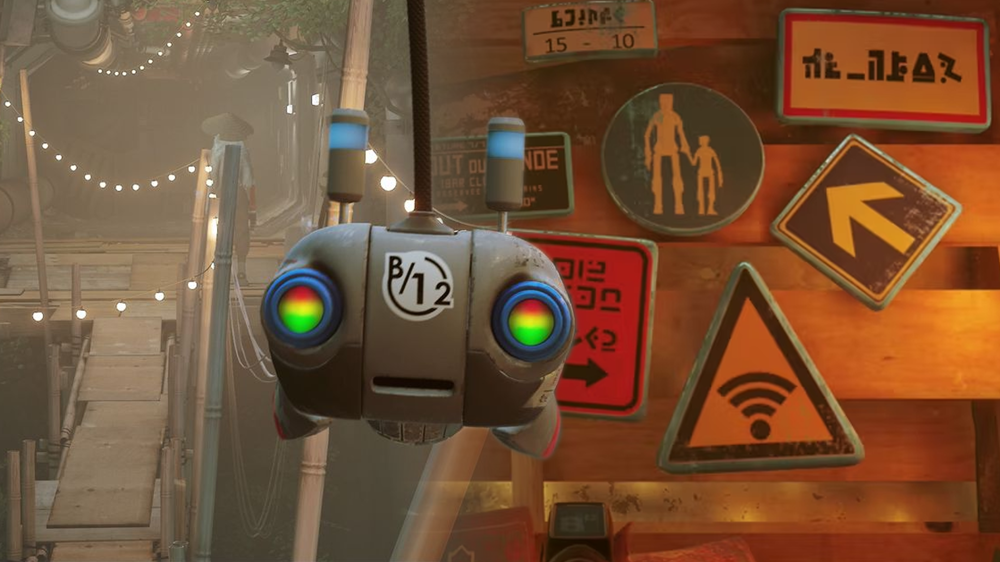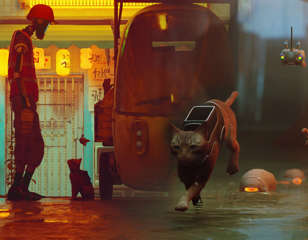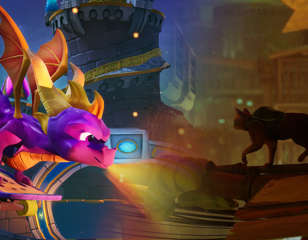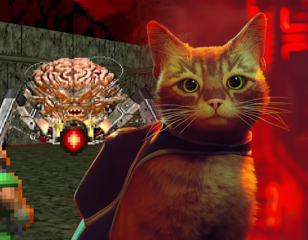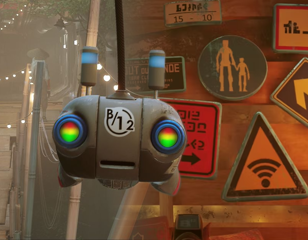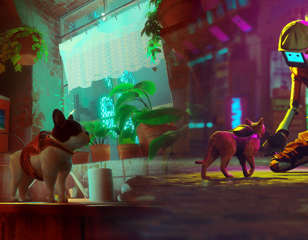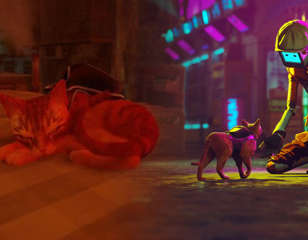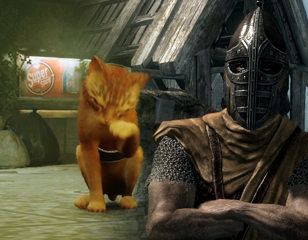You Don't Understand Stray's Language - But That's What Makes It Special
The way that BlueTwelve utilises language in Stray is exactly what makes it impressive, and what makes the feline adventure just so immersive.

Joseph Kime
26th Jul 2022 15:59
Images: BlueTwelve
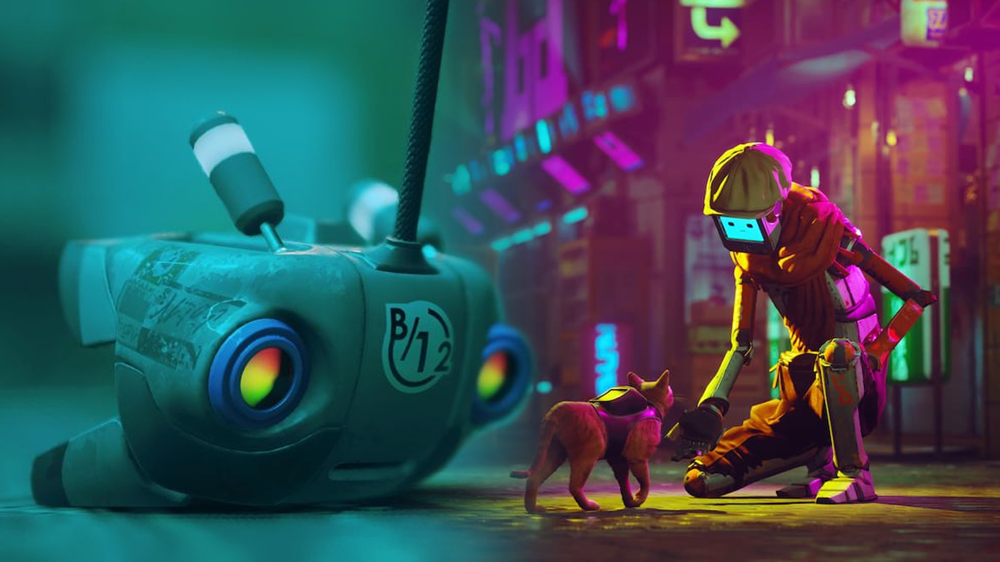
The following article contains minor spoilers for Stray's locations and narrative. The ending won't be spoiled, but regardless… you have been warned.
Barely a week into its life cycle, Stray is already one of the most talked-about indie games of the year. And that's a pretty impressive feat straight out of the gate for BlueTwelve.
It might be considered pretty easy to market a game where you play as a cat on a big adventure, but to reach such heights couldn't have been predicted by anyone. It has undoubtedly aided the development of the refreshed PS Plus and kept PlayStation users busy, exploring an overgrown dystopia with a swirling verticality. Plus, with a dedicated meow button and the option to curl up next to robots, there are very few that will be able to meaningfully resist its incredible charm.
The game's blatant joy is in letting you experience a setting we've seen before through new, reflective eyes as the titular stray cat, and it truly revels in this - but Stray is able to extend this feeling long beyond hopping over rooftops with ease and drinking out of puddles. In fact, it's the things that you fail to understand as a cat that makes the title so immersive.
Stray's Language Is The Key To Its Immersion
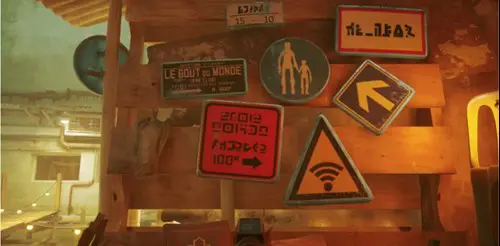
Though the languages of Stray have already been decoded by fans, but its function is to not be understood. The game is quite unique in putting you on the floor as a cat, playing the role of a cute traveller that is widely considered as a less intelligent creature than the robots around them, and not being able to understand the language, whether written or spoken, makes total sense.
The power of being able to read or comprehend anything without the help of B12 really sets you back, and though there's a human being behind the controller, you're still set to the same level of literacy of a cat in our very own world.
It's a difficult balance to strike, but Stray manages to use the text and markers that detail the world in such an obtuse way that they can't be deciphered on the fly, yet they're still so simple that they can be gleaned in passing. Midtown is a prime example of this, using neon signs that indicate the nightclub that aren't readable but are so bright and indicative of what they're meant to signify, that you just get it.
There are also markers on every store in the area, that aren't easy to make sense of by any stretch, but it's clear to see that they stand as street numbers. There are little tokens like this all over the place, that indicate a society that is functional at every niche level, but is simply too far advanced for you to make sense of. It's a genius way to make players feel like they're truly on their own as an individual, not only as a traveller, but as an entirely different species.
B12 Is Stray's Greatest Asset
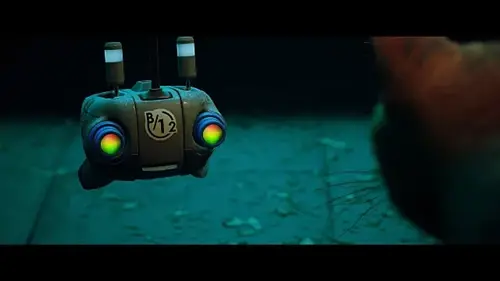
Stray of course wouldn't be anything without at least a little bit of chat to move the narrative forwards, so the game gifts you with B12, the adorable little robot who floats around, who accompanies you on your adventure and helps to hack through doors and process information for you. He translates the robots around you so that you can get to know them and the world they inhabit, and without him, you wouldn't be able to continue.
Before you meet B12, the gameplay is still comfortable as you explore on your lonesome, but once he chooses to join you on your journey, and you get to grips with what he does for your story, he becomes instantly indispensable. So much so that when he experiences a total existential crisis and becomes incredibly reluctant to speak to anyone, you feel more isolated than ever.
It becomes clear that without a companion to help you make sense of the world, you're only going to get so far, and his return to form brings an overwhelming sense of relief.
B12 ends up being your lifeline in this strange world, and his presence brings genuine relief. The way that the language of Stray helps to make B12 become more crucial to you, and draws the two of you together - and as the game is B12's story in many ways, it truly makes for an experience that's tied up nicely by the language around you.
Stray's World Is Inaccessible - But That's What Makes It Fun
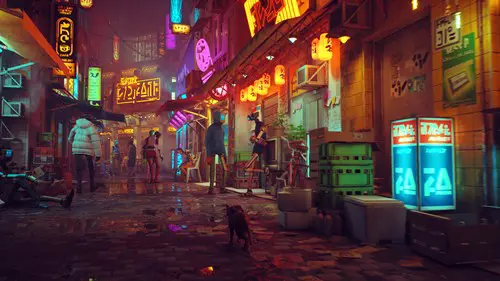
The way that Stray uses the language in its world to refrain from telling the player a story is an incredibly clever way to make them push even harder to learn even more, to speak to as many robots as possible, to get the full story. Of course, some questions will go unanswered - but the journey is the destination in Stray, and it truly revels in letting you use your feline agility to find it all yourself.
There are few games that can harness a world that makes little sense to you to craft an urge to discover quite like Stray, and it's one of the things that so effortlessly guides you down its alleys and corridors. Forcing you to get it without ever getting it, BlueTwelve has reverse-engineered narrative compulsion - and it's something that deserves to be truly commended.

About The Author
Joseph Kime
Joseph Kime is the Senior Trending News Journalist for GGRecon from Devon, UK. Before graduating from MarJon University with a degree in Journalism, he started writing music reviews for his own website before writing for the likes of FANDOM, Zavvi and The Digital Fix. He is host of the Big Screen Book Club podcast, and author of Building A Universe, a book that chronicles the history of superhero movies. His favourite games include DOOM (2016), Celeste and Pokemon Emerald.
